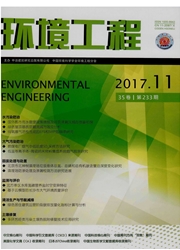

 中文摘要:
中文摘要:
鉴于目前土壤修复过程中广泛采用的气相抽提系统技术(SVE)相应尾气净化技术的缺失,为有效提高气相抽提系统技术后端尾气净化效率,提出采用复合生物法净化SVE尾气。以甲苯为目标污染物,以活性炭为主要填料,利用焦化污水处理厂的活性污泥接种挂膜研究了生物过滤反应器对模拟气体的净化性能及其影响因素(包括进气流量、停留时间、入口浓度、入口体积负荷),并将复合生物法与活性炭吸附法进行了性能比较。实验结果表明:生物过滤反应器的去除效率随进气流量的增大而降低,随气体停留时间的延长而提高,随入口浓度的增大而降低,反应器的体积去除负荷随入口体积负荷的增大而增大,这说明生物过滤反应器能有效去除甲苯废气,且去除效果优于活性炭吸附法。
 英文摘要:
英文摘要:
Considering the deletion of corresponding exhaust gas removal technique used in soil vapour extraction (SVE) process used widely for soil remediation, a combined biological method for removing SVE exhaust gas was proposed to effectively improve the removal of exhaust gas in the end of SVE. With toluene as the target pollutants, activated carbon as the main filler, the gas removal performance of biological filter reactor and its influencing factors ( including the inlet air flow, residence time,inlet concentration, inlet volume load) were studied, using activated sludge inoculated biofilm of coking wastewater treatment plant. Further, the combined biological method was compared with the activated carbon adsorption method. The experimental results showed that the removal efficiency of the biological filter reactor reduced with the increase of the inlet air flow, improved with the extension of the gas residence time, reduced with the increase of the inlet concentration, and the volume removal load of the reactor increased with the increase of the inlet volume load, indicating that the biological filter reactor can effectively remove the toluene exhaust, and the removal effect is better than the activated carbon adsorption method.
 同期刊论文项目
同期刊论文项目
 同项目期刊论文
同项目期刊论文
 期刊信息
期刊信息
